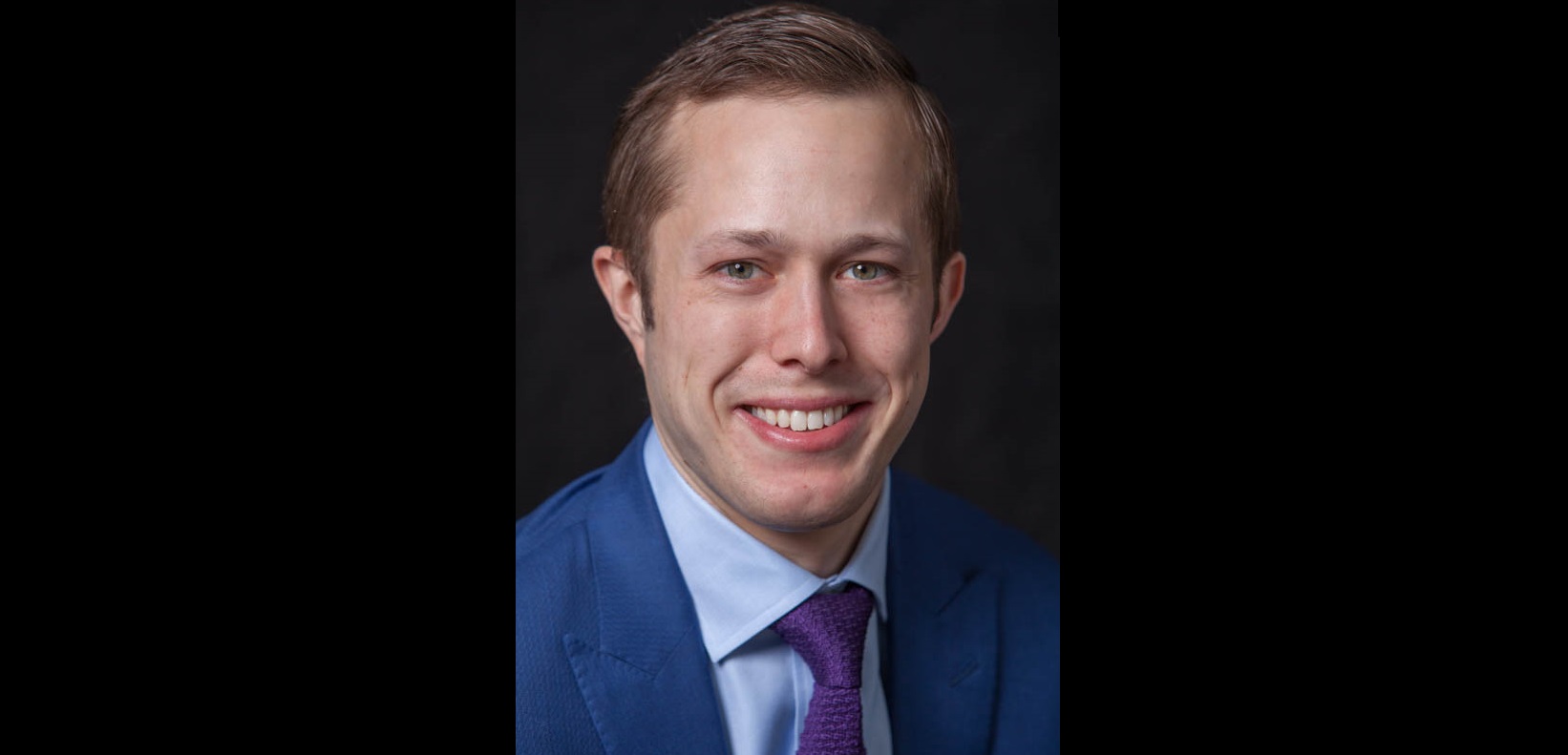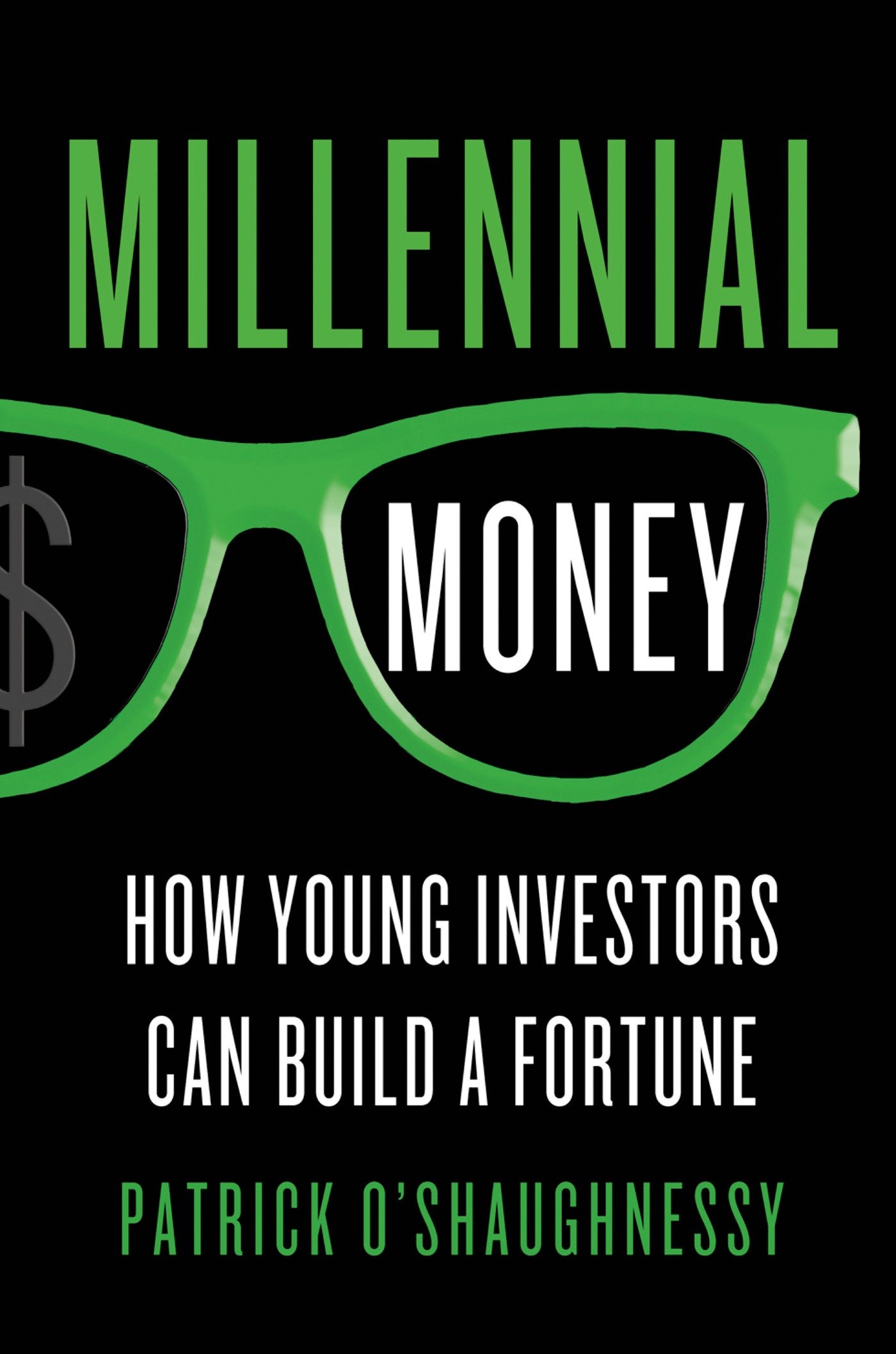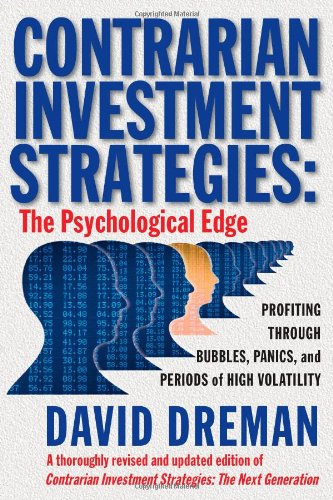Author Background:
Patrick O’Shaughnessy, CFA is a Principal and Portfolio Manager at O’Shaughnessy Asset Management (OSAM). Patrick is the author of Millennial Money: How Young Investors can Build a Fortune and is a contributing author to the fourth edition of What Works on Wall Street. Patrick’s is an expert in investment strategy research and investor behavior and holds a B.A. in Philosophy from the University of Notre Dame.
Patrick’s Book Recommendation:
Audio Podcast:
Other ways to listen:
* On iTunes
* Right Click + Save As to download as an MP3
* Stream here directly
With gratitude,
Transcript:
Jake: Hi, welcome to Five Good Questions. I’m your host, Jake Taylor. Our guest today is Patrick O’Shaughnessy. Patrick is a CFA as well as a Portfolio Manager for O’Shaughnessy Asset Management, a firm managing $7 billion.
Patrick is the author of Millennial Money: How Young Investors Can Build A Fortune. He’s also a Contributing Editor to the Fourth Edition of What Works On Wall Street.
Patrick is an expert in an Investment Research and Investor Behavior. And he also holds a BA in Philosophy from the University of Notre Dame. Let’s ask him five good questions.
Jake: Welcome everybody. Today’s guest is Patrick O’Shaughnessy. Patrick is the author of the Millennial Money: How Young Investors Can Build A Fortune.
Patrick, why are we talking to you today?
Patrick: We’re talking so that we can try to get the attention of some young investors out there and maybe even their parents to raise the urgency a little bit around the need to invest earlier and in greater amounts than young people tend to.
Jake: That’s a great cause. Let’s jump right in to our five good questions for you.
Patrick: Sure.
Jake: First question is, you do a fantastic job of explaining in your book some of the key headwinds that investors were likely to face over the next 5 to 10 years, maybe even 20 years. What are those headwinds and what can we do about them?
Patrick: Maybe the key headwind is this idea of demographics that our country along with the rest of the developed world is getting much older. So in just a few decades, the median age in the US will be similar to what it is in Florida today. The problem with an older population is that it’s much more expensive to support.
So if you look over the last couple of decades, the percentage of the government’s budget is spent on things like Social Security and Medicare has steadily risen while the savings rate has steadily fallen. So that’s kind of an alarming trend that we’re saving less and less, we’re more and more reliant on the government. But population is getting older and more expensive to support.
Now I don’t have a crystal ball, I don’t know what the fate of Social Security and Medicare will be. But I do think that these trends highlight the importance for Millennials to be more financially self-reliant than their parents and grandparents.
Jake: That’s great. Our question #2, even Warren Buffet has said that indexing is probably the best bet for the know-nothing investor. In your book, you do a fantastic job of good rebuttal against index investing.
Patrick: Right.
Jake: Can you explain that for us?
Patrick: Sure. So I would agree with Warren Buffet in one sense that if I just met somebody on the street and they ask me what to do, I would probably say buy global index fund. Just because it’s easy advice, they’re low cost and you can hopefully stick with it for the long term.
I think that indexes have one thing very right which is their discipline. The strategy of an index which is essentially is buy big cap stocks never changes. They don’t change their strategy in times of greed or fear or panic unlike a lot of investors out there. Where indexes have a problem, I think, is the strategy itself. Again, that idea of buy stocks, the bigger the better; the bigger they are, the more you own of them. That strategy hasn’t really worked historically. In fact, the biggest stocks have tended to underperform.
So I advocate a process that I think marries the best of index investing which is that discipline and consistent strategy with the best of active investing which is looking for stocks for reasons other than just their size. Looking for things like quality, very cheap valuations and things like that.
Jake: Great. Speaking of valuations, question #3 is about, right now in the environment if you use any normalized measurements whether it’s Market Cap to GDP, Tobin’s Q, Shiller PE; things are pretty expensive right now. So with that in mind, do you still recommend that young people invest in the markets?
Patrick: Yeah, well, one of my central messages in the book is to build a very global portfolio. So what you say is definitely true of United States equity market. So if you look at like Shiller’s PE, for example, it’s about 26 today which is definitely near the high end of its range. Not at all time highs and well off at 2000 high, for example.
But if you look at Europe, for example, or emerging markets, what you see is normalized PEs is more on the 13 to 15 range. And if you go even more specific to individual countries like if you go to Ireland, for example, you’ll see a PE above 9.
So it’s true that North America is much more expensive. But by building a much more global portfolio than US investors tend to, we tend to pay our home stocks. I think that investors will be well.
Jake: Great. And that’s actually goes well with question #4 which is, the main like central advice of your book is to be global. So that it’s kind of like the three central tenets of the book.
Patrick: Right.
Jake: Could you explain each one of those and how they impact investing? What are the implications?
Patrick: Yeah, well, the first two do tell nicely of what we talked about already. So go global is to overcome this tendency of portfolio patriotism. It’s what I like to call it. US investors tend to have about 75 or 80% of their equities in US stocks eventhough US stocks are only 45% or so of the global market. So I think it would be very prudent to build a more diversified global portfolio. And I explained the reasons why.
Being different is kind of the same idea about why I think you can be different than the market index and strategies that look a lot like the market index. By building a fairly concentrated portfolio of higher quality, cheap stocks that the market has just begun to notice and to do that in a very systematic fashion; I think that being different you can actually earn excess returns over the market.
And the final component which is actually the one that I spend the most chapters in the book on is get out of your own way. Because the number one variable in all of these investing success over the decades will be each individual investors own behavior. If you can make things automatic, remove your own emotions and yourself in the equation as much as possible, I think that you’ll be much better and I try to outline how to do that.
Jake: Yeah, there’s some great research out there that, basically, the human component probably takes returns off the table. Everyone likes to think that they’re geniuses but it’s probably more like we’re taking returns away from ourselves by being geniuses.
Patrick: Well, as one small data point. If you look at equity flows, so people buying and selling equity, mutual funds, the outflows or sales peaked in February of 2009. There were supposed to buy low and sell high and we sold at the exact market bottom in the greatest amounts. So we are definitely our own worst enemy.
Jake: Yeah. So this next question is question #5 and it’s kind of a tough question. So most statistical back testing of investing and what works was done primarily in the 20th century which the average was rising greatly over that time.
Patrick: Right.
Jake: If you follow some people like Peter Thiel, for instance, who thinks that maybe we aren’t progressing as quickly as we were in the 20th century. And he points to like transportation. Let’s say, you can’t get from Point A to Point B any faster than you could in the 1970s. We haven’t been on the moon in 42 years. Like he thinks that, in a world of stuff, we might be slowing down a little bit.
Patrick: Right.
Jake: And so what do you think about back testing? And do you think value investing in general still works in a maybe decaying society or in at least a stagnant society that wasn’t flourishing as quickly as, say, in the 20th century?
Patrick: It’s a great question and it brings to mind a few thoughts. So the first would be that the sample over which we’ve proven that value investing works includes some very catastrophic periods – wars, the Great Depression. Periods of long stagnation. So between 1968 and 1982, the market went nowhere. Over that same time frame, a value investing strategy did very, very well.
So the data sample that we’ve rely on, yes, it’s generally in the upward environment of prosperity. But there are definitely period that were very tough and during those periods value investing did very well.
The second thought I had is that I think the reason that it works is rooted in investor’s psychology. Our brains are about twice as sensitive to losses as they are to gains. So things that appeared dangerous which, basically, all value stocks do.
Jake: Yeah.
Patrick: They take their value because the outlook or the expectation is very low. When things appeared dangerous, we tend to be overly pessimistic and leave this gap between perception and reality. That’s the gap that the value investor can capitalize on. And I don’t think that that’s going to change in the future because human nature is not going to change. That’s one thing that we can be very sure of. So I’m confident that the value investing will continue to work in the future.
Jake: Great. I appreciate that nuanced answer. Well, those are our 5 good questions for you, Patrick. Everybody, pick up Millennial Money especially for younger people. Maybe a college grad, you want to get them set on the right path. I mean, I really do believe implementing things from this book for a young person, they’ll look back 40 years from now and go, “Oh my god, that was huge for me.”
So Patrick thanks for writing such a great thing.
Patrick: Yeah. Absolutely. Thanks very much for having me.
Jake: Alright, Patrick. Thank you.
Patrick: Cheers.
Patrick is the author of Millennial Money: How Young Investors Can Build A Fortune. He’s also a Contributing Editor to the Fourth Edition of What Works On Wall Street.
Patrick is an expert in an Investment Research and Investor Behavior. And he also holds a BA in Philosophy from the University of Notre Dame. Let’s ask him five good questions.
Jake: Welcome everybody. Today’s guest is Patrick O’Shaughnessy. Patrick is the author of the Millennial Money: How Young Investors Can Build A Fortune.
Patrick, why are we talking to you today?
Patrick: We’re talking so that we can try to get the attention of some young investors out there and maybe even their parents to raise the urgency a little bit around the need to invest earlier and in greater amounts than young people tend to.
Jake: That’s a great cause. Let’s jump right in to our five good questions for you.
Patrick: Sure.
Jake: First question is, you do a fantastic job of explaining in your book some of the key headwinds that investors were likely to face over the next 5 to 10 years, maybe even 20 years. What are those headwinds and what can we do about them?
Patrick: Maybe the key headwind is this idea of demographics that our country along with the rest of the developed world is getting much older. So in just a few decades, the median age in the US will be similar to what it is in Florida today. The problem with an older population is that it’s much more expensive to support.
So if you look over the last couple of decades, the percentage of the government’s budget is spent on things like Social Security and Medicare has steadily risen while the savings rate has steadily fallen. So that’s kind of an alarming trend that we’re saving less and less, we’re more and more reliant on the government. But population is getting older and more expensive to support.
Now I don’t have a crystal ball, I don’t know what the fate of Social Security and Medicare will be. But I do think that these trends highlight the importance for Millennials to be more financially self-reliant than their parents and grandparents.
Jake: That’s great. Our question #2, even Warren Buffet has said that indexing is probably the best bet for the know-nothing investor. In your book, you do a fantastic job of good rebuttal against index investing.
Patrick: Right.
Jake: Can you explain that for us?
Patrick: Sure. So I would agree with Warren Buffet in one sense that if I just met somebody on the street and they ask me what to do, I would probably say buy global index fund. Just because it’s easy advice, they’re low cost and you can hopefully stick with it for the long term.
I think that indexes have one thing very right which is their discipline. The strategy of an index which is essentially is buy big cap stocks never changes. They don’t change their strategy in times of greed or fear or panic unlike a lot of investors out there. Where indexes have a problem, I think, is the strategy itself. Again, that idea of buy stocks, the bigger the better; the bigger they are, the more you own of them. That strategy hasn’t really worked historically. In fact, the biggest stocks have tended to underperform.
So I advocate a process that I think marries the best of index investing which is that discipline and consistent strategy with the best of active investing which is looking for stocks for reasons other than just their size. Looking for things like quality, very cheap valuations and things like that.
Jake: Great. Speaking of valuations, question #3 is about, right now in the environment if you use any normalized measurements whether it’s Market Cap to GDP, Tobin’s Q, Shiller PE; things are pretty expensive right now. So with that in mind, do you still recommend that young people invest in the markets?
Patrick: Yeah, well, one of my central messages in the book is to build a very global portfolio. So what you say is definitely true of United States equity market. So if you look at like Shiller’s PE, for example, it’s about 26 today which is definitely near the high end of its range. Not at all time highs and well off at 2000 high, for example.
But if you look at Europe, for example, or emerging markets, what you see is normalized PEs is more on the 13 to 15 range. And if you go even more specific to individual countries like if you go to Ireland, for example, you’ll see a PE above 9.
So it’s true that North America is much more expensive. But by building a much more global portfolio than US investors tend to, we tend to pay our home stocks. I think that investors will be well.
Jake: Great. And that’s actually goes well with question #4 which is, the main like central advice of your book is to be global. So that it’s kind of like the three central tenets of the book.
Patrick: Right.
Jake: Could you explain each one of those and how they impact investing? What are the implications?
Patrick: Yeah, well, the first two do tell nicely of what we talked about already. So go global is to overcome this tendency of portfolio patriotism. It’s what I like to call it. US investors tend to have about 75 or 80% of their equities in US stocks eventhough US stocks are only 45% or so of the global market. So I think it would be very prudent to build a more diversified global portfolio. And I explained the reasons why.
Being different is kind of the same idea about why I think you can be different than the market index and strategies that look a lot like the market index. By building a fairly concentrated portfolio of higher quality, cheap stocks that the market has just begun to notice and to do that in a very systematic fashion; I think that being different you can actually earn excess returns over the market.
And the final component which is actually the one that I spend the most chapters in the book on is get out of your own way. Because the number one variable in all of these investing success over the decades will be each individual investors own behavior. If you can make things automatic, remove your own emotions and yourself in the equation as much as possible, I think that you’ll be much better and I try to outline how to do that.
Jake: Yeah, there’s some great research out there that, basically, the human component probably takes returns off the table. Everyone likes to think that they’re geniuses but it’s probably more like we’re taking returns away from ourselves by being geniuses.
Patrick: Well, as one small data point. If you look at equity flows, so people buying and selling equity, mutual funds, the outflows or sales peaked in February of 2009. There were supposed to buy low and sell high and we sold at the exact market bottom in the greatest amounts. So we are definitely our own worst enemy.
Jake: Yeah. So this next question is question #5 and it’s kind of a tough question. So most statistical back testing of investing and what works was done primarily in the 20th century which the average was rising greatly over that time.
Patrick: Right.
Jake: If you follow some people like Peter Thiel, for instance, who thinks that maybe we aren’t progressing as quickly as we were in the 20th century. And he points to like transportation. Let’s say, you can’t get from Point A to Point B any faster than you could in the 1970s. We haven’t been on the moon in 42 years. Like he thinks that, in a world of stuff, we might be slowing down a little bit.
Patrick: Right.
Jake: And so what do you think about back testing? And do you think value investing in general still works in a maybe decaying society or in at least a stagnant society that wasn’t flourishing as quickly as, say, in the 20th century?
Patrick: It’s a great question and it brings to mind a few thoughts. So the first would be that the sample over which we’ve proven that value investing works includes some very catastrophic periods – wars, the Great Depression. Periods of long stagnation. So between 1968 and 1982, the market went nowhere. Over that same time frame, a value investing strategy did very, very well.
So the data sample that we’ve rely on, yes, it’s generally in the upward environment of prosperity. But there are definitely period that were very tough and during those periods value investing did very well.
The second thought I had is that I think the reason that it works is rooted in investor’s psychology. Our brains are about twice as sensitive to losses as they are to gains. So things that appeared dangerous which, basically, all value stocks do.
Jake: Yeah.
Patrick: They take their value because the outlook or the expectation is very low. When things appeared dangerous, we tend to be overly pessimistic and leave this gap between perception and reality. That’s the gap that the value investor can capitalize on. And I don’t think that that’s going to change in the future because human nature is not going to change. That’s one thing that we can be very sure of. So I’m confident that the value investing will continue to work in the future.
Jake: Great. I appreciate that nuanced answer. Well, those are our 5 good questions for you, Patrick. Everybody, pick up Millennial Money especially for younger people. Maybe a college grad, you want to get them set on the right path. I mean, I really do believe implementing things from this book for a young person, they’ll look back 40 years from now and go, “Oh my god, that was huge for me.”
So Patrick thanks for writing such a great thing.
Patrick: Yeah. Absolutely. Thanks very much for having me.
Jake: Alright, Patrick. Thank you.
Patrick: Cheers.





